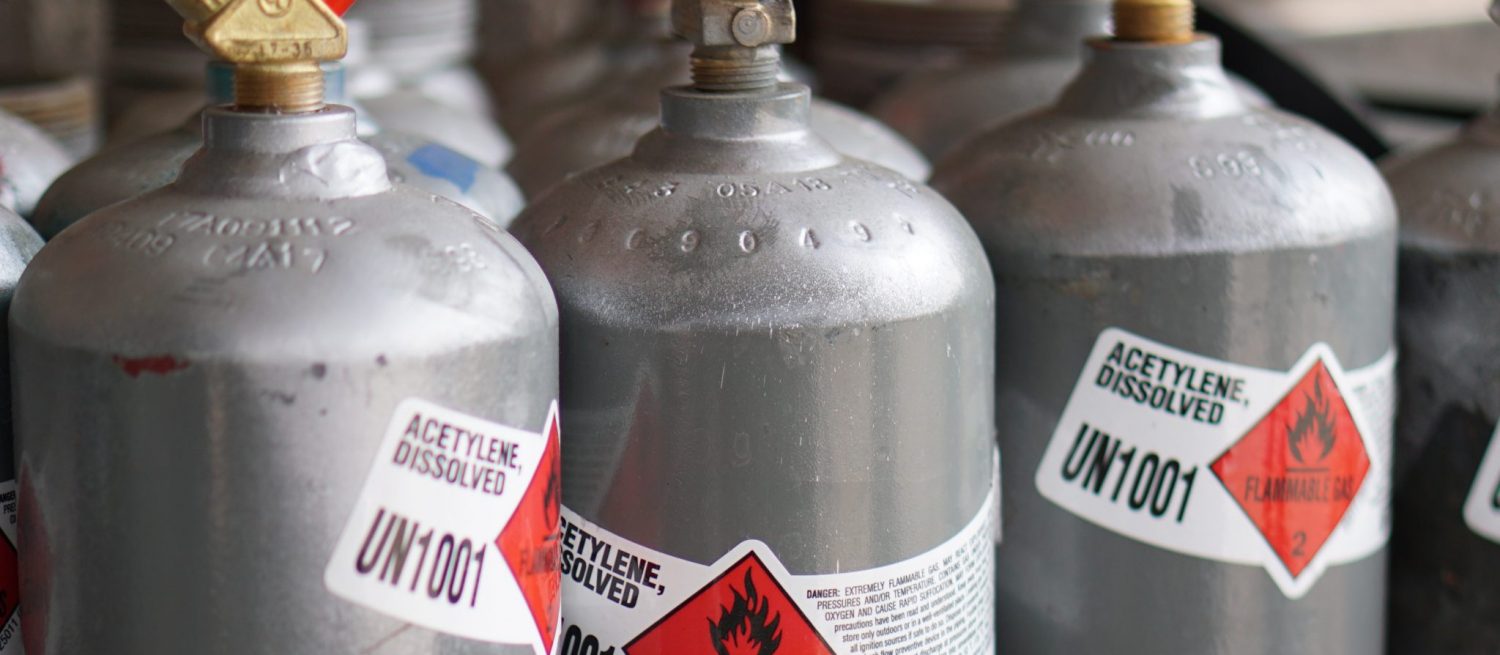

Acetylene Manufacturing: Chemical Reaction and Thermal Cracking
Acetylene (C₂H₂) remains the hottest burning flame available in oxyfuel welding, cutting, brazing, and heat-treating metal. Its many uses cross a wide range of industries. For example, the automotive industry employs acetylene for brazing and low-pressure carburizing. There are also numerous fabricators and glass makers that use acetylene throughout their processes. Acetylene’s high temperature flame makes it an excellent gas for cutting, brazing, and welding applications, as well as hardening steel for certain applications in automotive production.
There are two primary ways that acetylene is manufactured that we’ll explore: chemical reactions using calcium carbide and a technique called thermal cracking.
Creating a Chemical Reaction with Calcium Carbide
The wet process of a calcium carbide chemical reaction involves adding water to calcium carbide granules, or the granules to water into a chamber. Like flour puffing out of a standing mixer on high-speed, it is important that the chemical reaction does not generate acetylene gas too quickly. This combination creates a solution that is continually stirred with a paddle to initiate a reaction, keeping granules moving so that they do not meet the highly explosive acetylene gas teeming off the top.
Temperature is a factor when handling acetylene that must be consistently monitored due to its explosivity. When water meets calcium carbide, it creates a high heat chemical reaction, that which must be quenched and maintained. As acetylene rises like vapor from boiling water, it is cooled with water, leaving the chamber, and entering another.
Acetylene is not the only byproduct in this reaction. Calcium carbonate, also known as “lime,” is also produced. Rather than ascending like acetylene, lime descends and is held in a separate chamber where water is removed. Lime is a chemical compound implemented in water treatment plants and road construction for asphalt and similar materials.
Manufacturing acetylene with calcium carbide and water occurs at normal room temperatures, but thermal cracking cranks up the heat to alter atomic states.
Breaking Bonds Through Thermal Cracking
Thermal cracking is a method of acetylene production, which essentially “cracks” the hydrocarbon atom bonds of oil and natural gas, separating and rebinding them to create different materials. This process implements burning, boiling, and diffusing, creating multiple byproducts that must be scrubbed and separated.
To begin the thermal cracking of natural gas atoms, combustion chambers preheat it to 1,200 degrees Fahrenheit. The gas self-ignites and travels through a pipe where oxygen is added. The speed of the process is carefully regulated using a diffuser, keeping the heated natural gas and oxygen mixture from burning and shooting out of the burners toward the end of the pipeline, or from retreating and igniting the gas already within the pipeline. Traveling through various small channels, the gas comes out of a stove-like burner, emitting methane and other gases. Methane can be converted in acetylene when its atomic bonds “crack.” Acetylene, especially at high heats, must be cooled with water to deactivate the probability of combustion.
Acetylene, carbon monoxide, carbon dioxide, methane, and carbon soot are all byproducts of this process and must be separated. A special solvent absorbs only the acetylene while carbon soot is scrubbed out. The solvent-acetylene solution is then boiled, where the acetylene rises and is captured in a tower.
In both the chemical reaction and thermal cracking processes, acetylene is packaged in cylinders at 300 psi and dissolved in acetone to retract its ability to explode.
Acetylene from Rocky Mountain Air
Rocky Mountain Air manufactures industrial grade acetylene in our Salt Lake City plant and delivers the acetylene to our customers and several competitor gas suppliers throughout our distribution region. We can also supply your atomic absorption grade acetylene. If you use acetylene in our region, it is very possible that it will come from RMA.
Since the distribution and filling process is time intensive and acetylene is an extremely volatile gas, a lot of time and effort goes into ensuring that everything and everyone is safe. We have ensured that the refining process is in the hands of experienced, highly trained, and knowledgeable technicians who perform their work with the highest care for the sake of their own safety and the safety of others. RMA can supply your high purity industrial grade acetylene and atomic absorption grade acetylene, available in multiple cylinder sizes, as well as lime.
If your business is interested in purchasing acetylene or lime, or for questions about cylinder sizes and delivery options, contact your local RMA branch today in any one of our five or surrounding states (Colorado, Utah, Nebraska, Idaho, Wyoming) today. We look forward to serving you!



